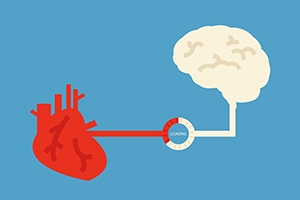Research
Behavioral Science: Insights for Public Administration

What can the behavior teach us about our own financial decisions, global economy, or leading a nation? Believe it or not, there are real correlations to be drawn between the two when looking at each through the framework of behavioral sciences.
At a recent forum, Behavioral Science: Insights for Public Administration organized by American University’s School of Public Affairs and the National Academy of Public Administration, several of SPA’s faculty experts discussed the impact of behavioral economics/sciences on policy, government programs, and the potential applications for an incoming Presidential administration.
Behavioral science is the area of study that focuses on the psychological influences that lead people to make certain rational, and irrational, decisions or choices. Though the study of behavioral economics has existed for well over 20 years, it has recently grown in popularity in the arena of public policy.
During the forum, Seth Gershenson, SPA Assistant Professor, explained one facet of behavioral science called “loss aversion."
“People get more upset by losing five dollars than they do get happy by gaining 5 dollars,” said Gershenson.
To illustrate this fact, Gershenson talked about a study that took place with a group of students at Cornell. He said that half the group were given coffee mugs and the other half were not. When asked how much the group with mugs would sell their mugs for, the average answer was $10. When asked how much the group without mugs would be willing to pay to own one, they said an average of $5.
“The endowment effect led to people who were given the coffee mug, who had the endowment, were willing to pay twice as much for the exact same coffee mug as the people who didn’t have it,” said Gershenson. “They were loss averse, they didn’t want to give up the coffee mug that they already had.”
How can we leverage the knowledge of loss aversion and endowment effect so that policy makers can use incentive programs more effectively?
Behaviors to Live and Lead By
On September 15 of 2015, President Obama, by executive order, directed the government to begin using insights from behavioral science in federal agency programs. This stemmed from a report from the White House Social and Behavioral Sciences Team that found small changes can make a big difference in things such as wait times and administrative hurdles.
When the White House announced this, they cited several behavioral science insights that have, once applied to government agency business, had successful outcomes. For example, automatic enrollment and automatic escalation in retirement savings plans have made it easier for many to save for retirement. In addition, they noted that streamlining the application process for Federal financial aid has made college more financially accessible for many students.
SPA’s Assistant Professor Taryn Morrissey and former advisor in the U.S. Senate and at the U.S. Department of Health and Human Services, sees a myriad of ways the administration can leverage the ideas gained from the study of behavioral science to better target programs to their recipients and to help the neediest of individuals to receive care.
“Behavioral science has a range of applications,” said Morrissey, who also spoke at the Behavioral Science Forum. “It means enhancing access or reduce the costs of fresh fruits and vegetables in food assistance programs, allowing families to sign up for multiple programs at once to reduce burden, and or to support initiatives to send messages to new parents as reminders for well-baby visits and developmental milestones.”
Behavioral science is just one of many areas of study that SPA’s world class faculty is using as a framework to look at complex problems and solutions in both the public and private sectors. Just like the behavioral research conducted about monkeys, studying and understanding human reaction and decision making will, no doubt, have many fascinating potential future applications in all levels of policy making.

